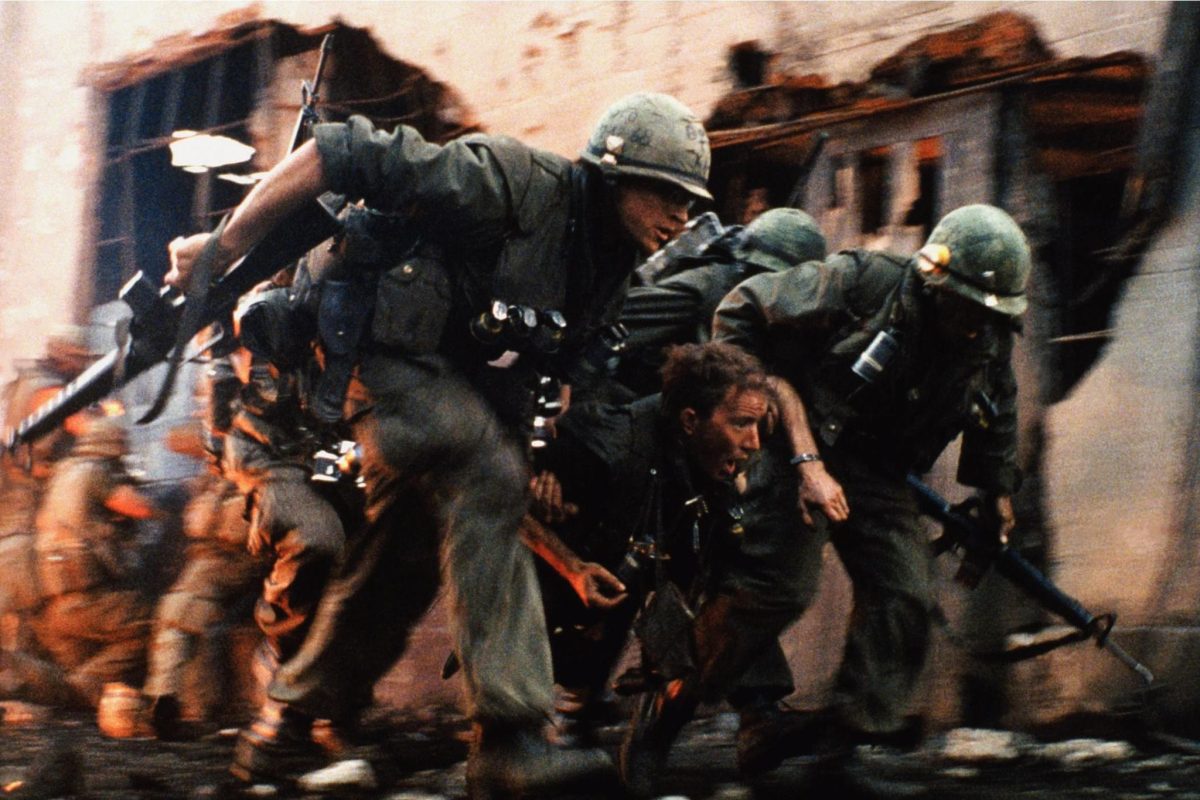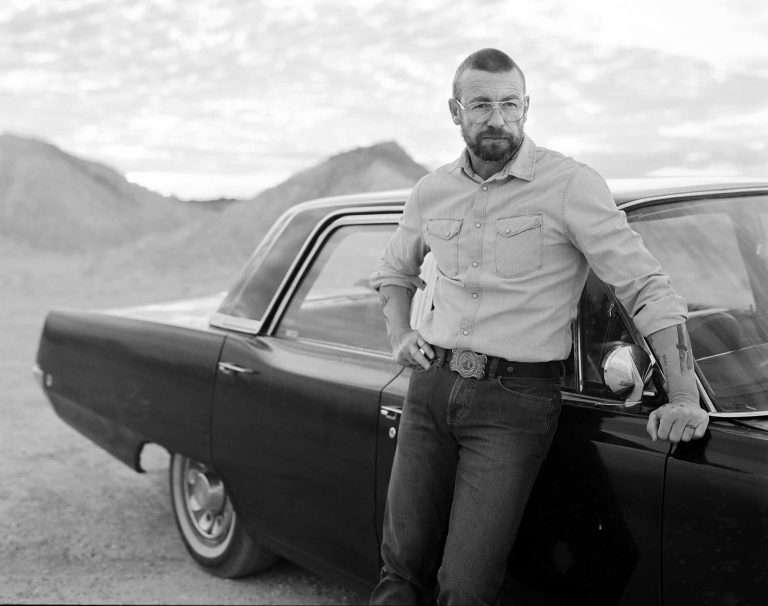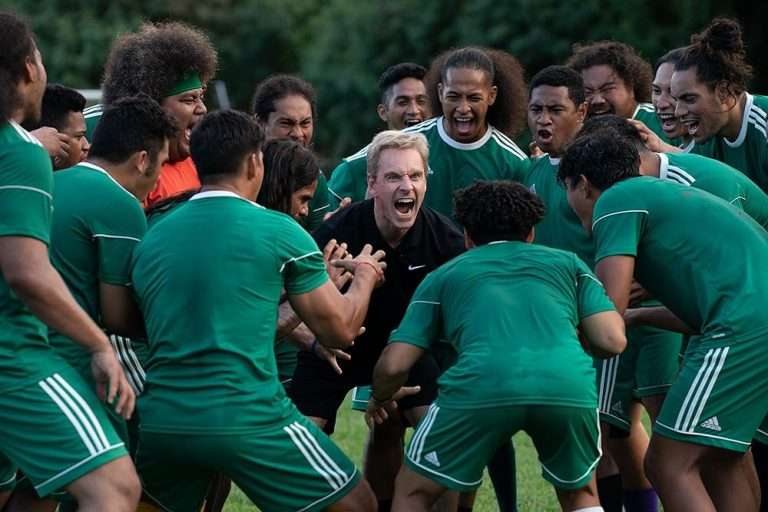Stanley Kubrick’s anti-war film “Full Metal Jacket” is a gnarly depiction of a metaphoric factory that has a conveyor belt where impressionable men go under extreme training and brainwashing and come out as soulless killing machines – rifles in their hands and murder on their minds. Set against the Vietnam-U.S. War background in the 70’s, it follows a young, empathetic Pvt. Joker (Matthew Modine), who enlists in the Marines and undergoes harsh training and bullying under the mentorship of the infamous Drill Instructor (R. Lee Ermey), who spews insults more creative than works of Shakespeare.
The film is distinctly split into two halves, where the first half serves as a lens into the prologue or the molding of these men into relentless killers, where shame is stripped to trousers, where crying isn’t feasible because all your water turns to sweat, mind to mush, and your heart to stone. The film begins with newly recruited trainees getting their hair shaved. Some men look excited, some nervous, some determined. But all their hopes are crushed when they meet the Drill Instructor, who disparages them, to bring out the best in them by inspiring fiery rage inside the young men. Iron molds only when they’re hot.
The trainees follow rigorous training schedules, listen to relentless insults, and are tormented by the fact that almost thirty tall men are powerless against an old, thin yeller. The Instructor targets Pvt. Pyle (Vincent D’Onofrio) because he can’t catch up in drills due to his weight and makes constant mistakes, which are then later paid for by the other trainees. This leads to extremely hateful acts against Pyle, which deteriorate his psyche, break his already sensitive persona down, to reveal a more primal, chilling side that upends the Marines’ batch in one night.

The story of Pyle is terrifyingly relatable to all the men who are crushed by others when they’re already past their limits. When they bottle all the rage, they’re liable to explode. And people like Pyle are explosives bound to go off anytime, most probably before they get to the enemy lines. The second half of “Full Metal Jacket” is set in the U.S. Marines Base in Vietnam. Private Joker, who was also a sensitive, empathetic man at the start of the film, tries to preserve his humanity by being a news correspondent among burning flesh, exploding buildings, and rounds of fire.
He and his photographer meet an old friend from the Marines batch, and they embark on a mission to slaughter enemies along with a crew. But as the second half runs into deeper trenches, and as Joker sees people die before him, he realizes something is changing within him. He becomes aroused to kill. His crewmates, with machine guns and rifles the size of their bodies, charge at people, see blood spew out of holes.
Even though Pvt. Joker wears a Peace symbol pin on his shirt, his helmet says ‘Born To Kill.’ His duality arises from the Jungian Duality when asked by a very angry General. His consciousness wants peace, while his unconsciousness wants in on the action, by killing enemies, by watching bodies writhe, but mostly, by feeling like he belongs in the crew. The feeling of surreal power, to know that he is in control of someone’s life, of one’s life and death, to embody that heady feeling.
Stanley Kubrick splits isolation and belongingness into two halves. In the first half, Private Pyle was isolated, bullied, left alone to fend for himself, which drove him over the edge, even though he was a perfect marksman. He was subjected to horrors even before he was called to serve on the base, because he knew there is death, it’s just a matter of ‘when’. In the second half, Joker tries to keep a guise of cool by thwarting tense situations with sarcasm and poor jokes, trying to blend in with the brotherhood of his crew, to banter, to make them care, to have their love endure in a battleground of hatred.

Kubrick keeps the cinematography in the first half extremely controlled, technical, and claustrophobic for the bunker scenes, echoing frames of “The Shining,” with colder shades and dead space between bunkers. While in the second half, the film takes on a very hands-on approach, the cameraman becomes one of the army crew as he follows the soldiers through the busted terrain and open spaces littered with debris. The fire glows a soft red, the skies bleed a bright blue, and dirty bodies stick together. The motifs even in the technical production of “Full Metal Jacket” depict how isolation throws a person into a void of darkness while brotherhood at last, ‘wins.’ But at what cost?
The Marines’ recruitment training instills a love for their rifle, to see it as their ‘wife’ and to remain forever faithful to it. It follows a simple rule of teen boys wanting a pat on the back by impressing their hardy father by climbing ropes and jumping off logs. It instills hatred through the indoctrination of loving one’s own country. Furthermore, it collectively spreads terror and trauma through humiliation and belittlement, which later infects the men on the base, helping them burn their rage off by killing and bombing, which ultimately ties them together – the glorious suffering.
Private Pyle endured his torment in isolation—alone in a cold bunk and hollow latrine—haunted by his sensitivity and perceived weakness. In contrast, Private Joker and the others suffered together, surrounded by familiar faces and loud voices, their shared pain marking a twisted rite of passage—proof that Pyle, at last, belonged. The Peace symbol pin is now lost. It lies somewhere among the rubble and blasted limbs. He lost all empathy, all the humanity he’d had. All he has are his men, his wife, and some full metal jacket bullets to spare.








![Kattumaram [2019]: ‘LIFF’ Review – A Beautifully Shot yet Superficial Tale of Queer Love](https://79468c92.delivery.rocketcdn.me/wp-content/uploads/2019/06/Kattumaram-c-768x479.jpg)
![The Half of It [2020] Netflix Review: A charming and breezy coming-of-age love triangle](https://79468c92.delivery.rocketcdn.me/wp-content/uploads/2020/05/The-Half-of-it-Netflix-1-768x373.jpg)